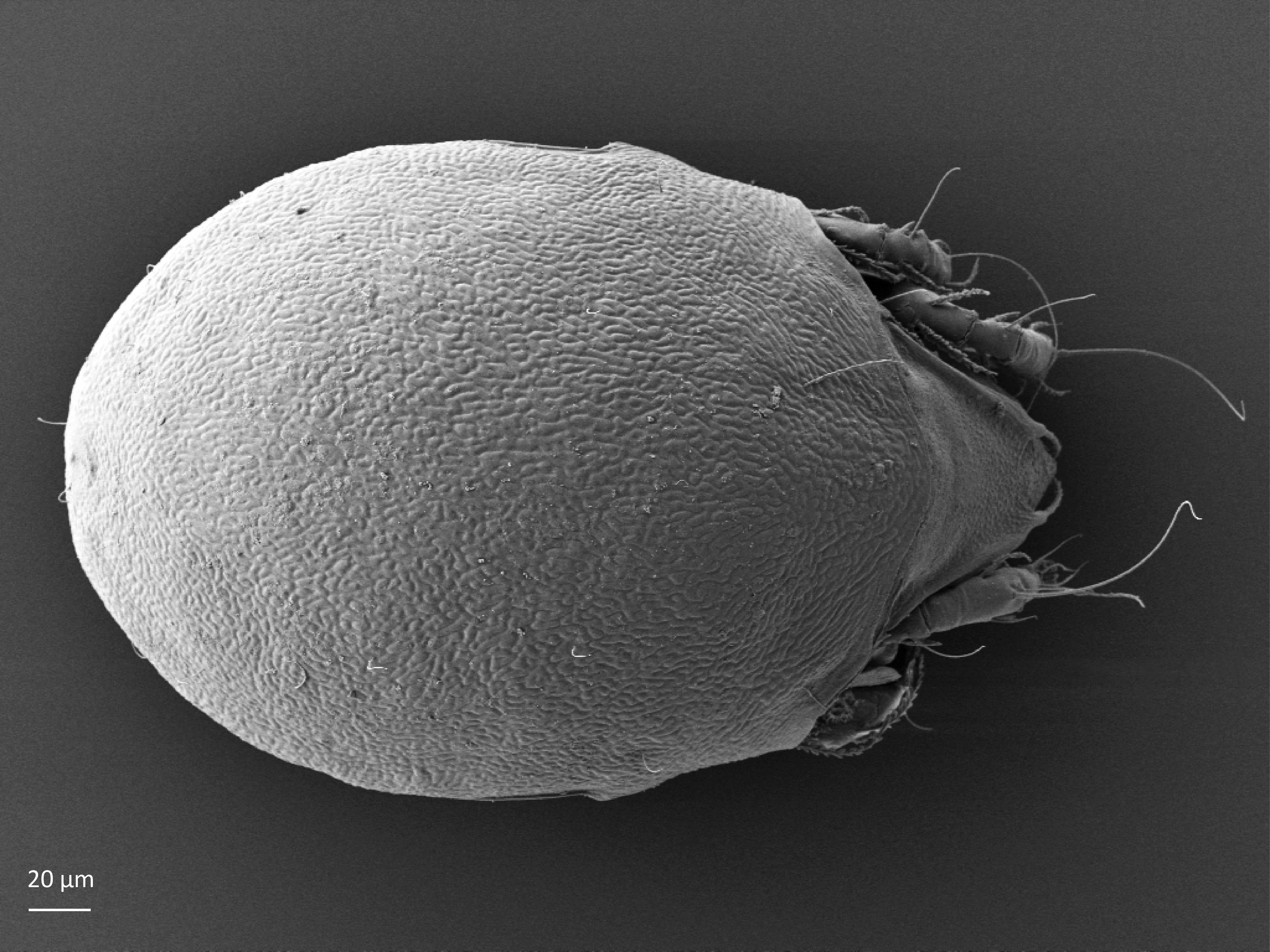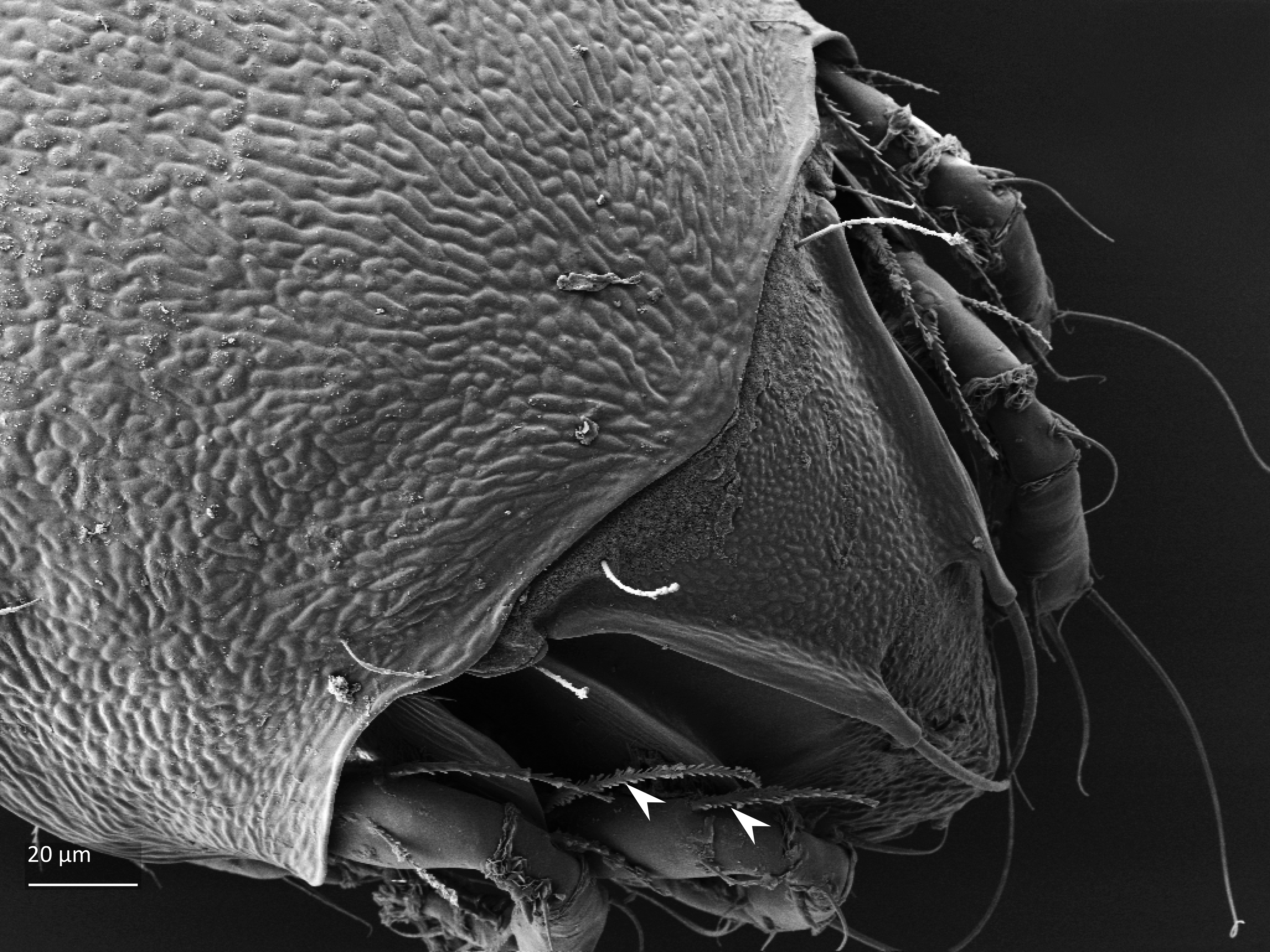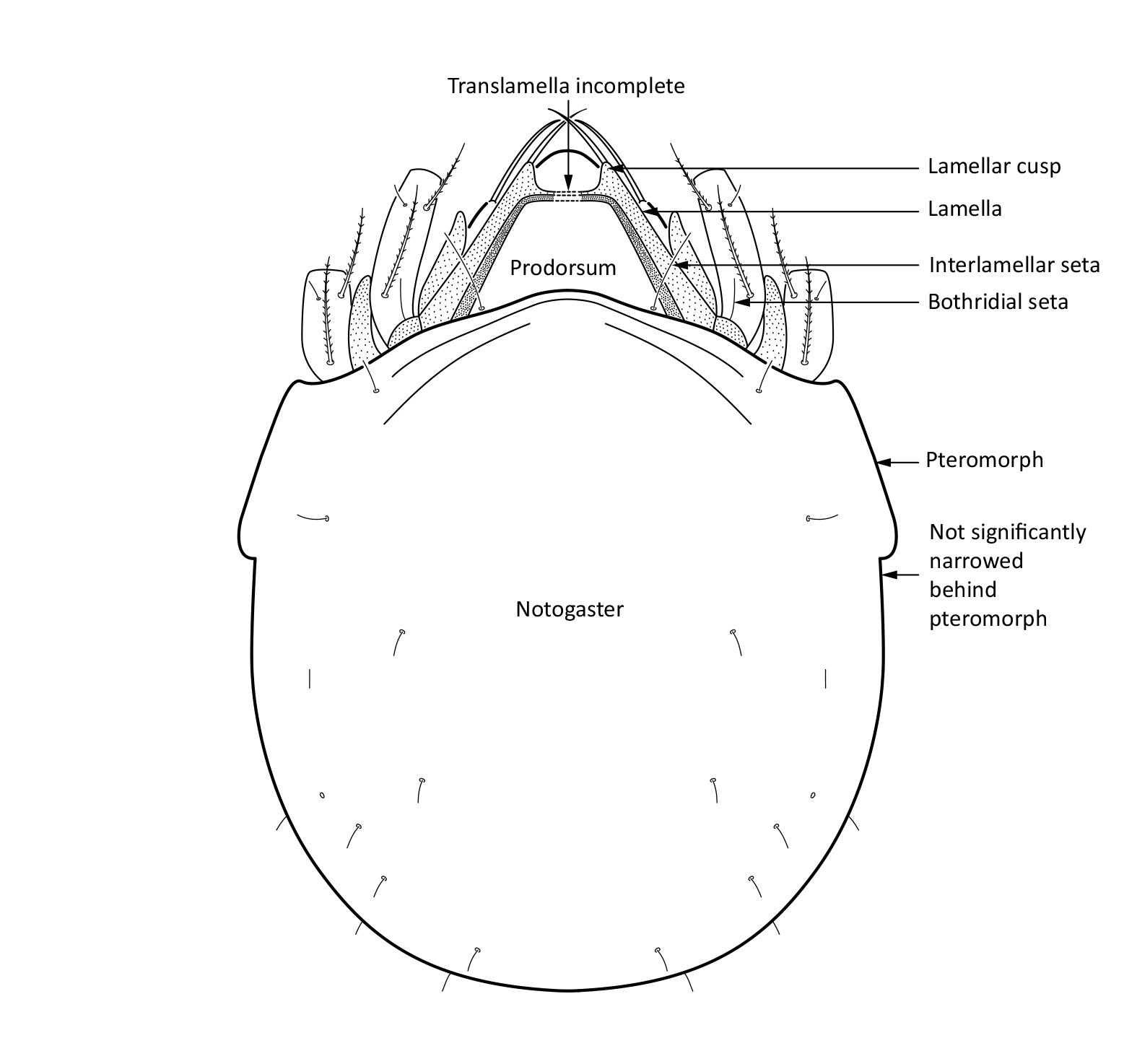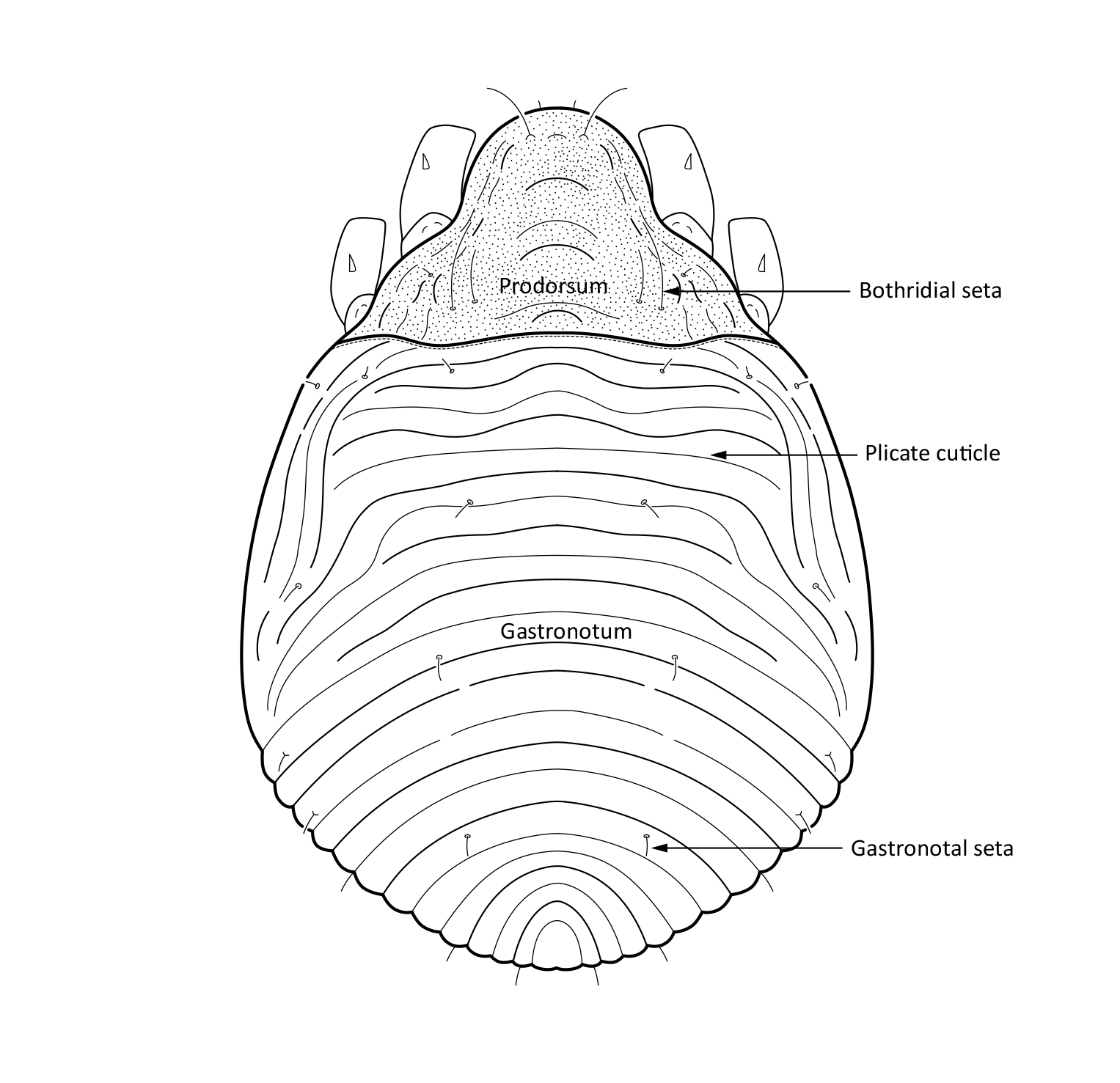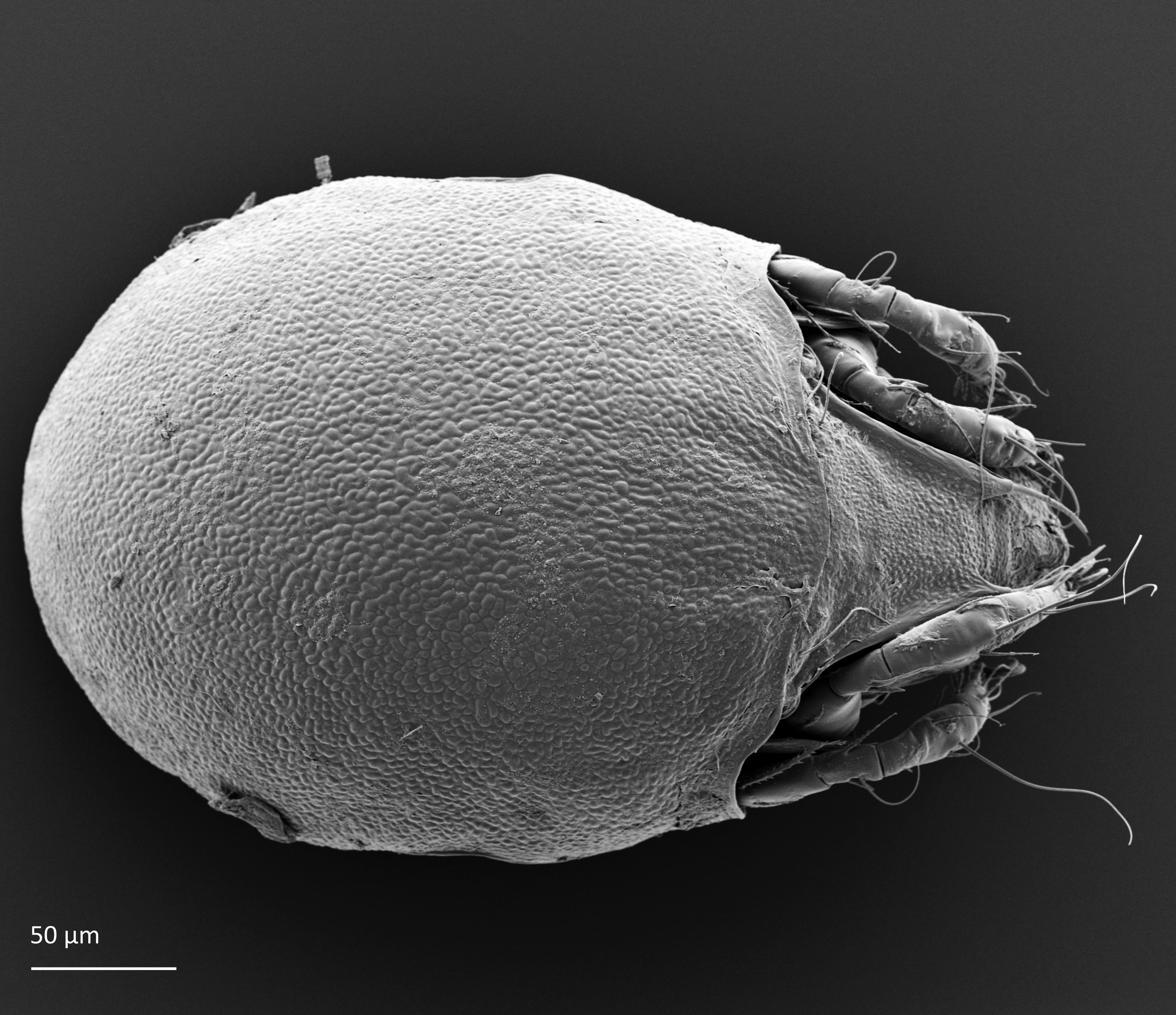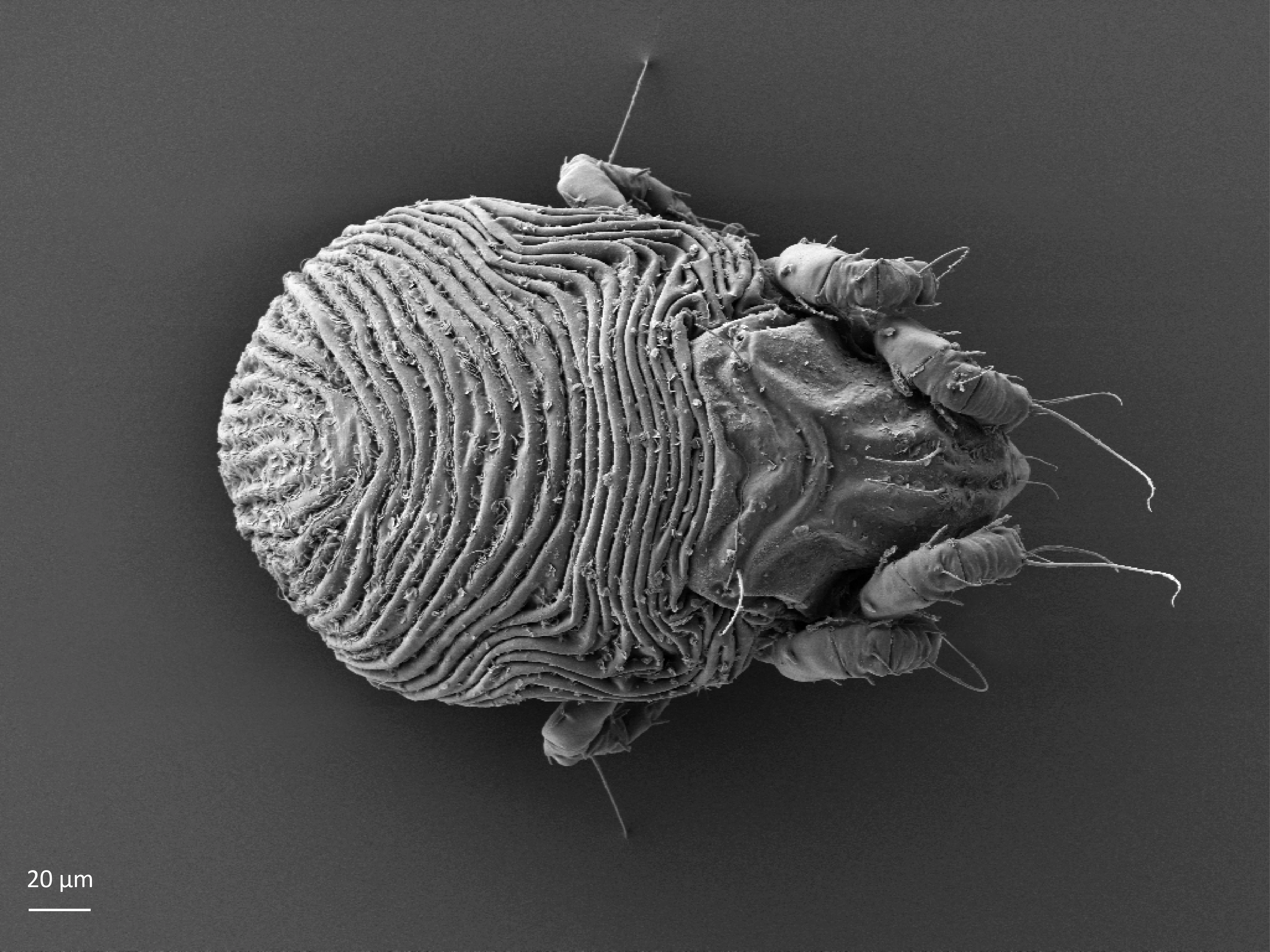Limnozetes schatzi
Limnozetes schatzi has recently been found in an Atlantic raised bog in Trøndelag and is so far (as of 2023) only known from Norway. It was found abundantly in a hollow filled with water and overgrown by peat mosses.
- Innhold
- Description
- Look-alikes
- Biology
- Ecology
Description
Fig. 2. Limnozetes schatzi, adult; arrowheads point to two peculiar setae on the femur of leg I.
Adult: The length of the body is on average 353 µm and the width is 240 µm. The body is stocky and brown. The notogaster is convex with body length/height ratio 1.9:1, and the body surface is covered with elongated and rounded microtubercles (seen on the Scanning Electron Microscopy image, but not presented in Fig. 1). There is a pair of pteromorphs, that is wing-like structures, in the front of the notogaster (Fig. 1), but the body is not significantly narrowed behind the pteromorphs, like e.g., in Limnozetes ciliatus (Schrank, 1803). The notogastral setae (10 pairs) are short and thin. The prodorsum has a pair of narrow lamellae with a well-developed cusp, but the translamella is incomplete. The bothridial seta is short, setiform, and barbed. Some setae on the femora, that is the upper part of the legs, have long barbs, often covered with debris (Fig. 2) (Seniczak and Seniczak 2021).
Juvenile stages: Larva: body length 191 µm, width 117 µm. Protonymph: body length 241 µm, width 131 µm. Deutonymph: body length 277 µm, width 158 µm. Tritonymph: body length 330 µm, width 231 µm. The color is white. The juveniles have plicate cuticle, similar as in Limnozetes rugosus (Fig. 3). The bothridial setae are long and setiform (Fig. 4). All the gastronotal setae are short (Seniczak and Seniczak 2021).
Fig. 1. Dorsal view of Limnozetes schatzi, adult.
Fig. 4. Dorsal view of Limnozetes schatzi, juvenile (tritonymph).
Look-alikes
Limnozetes schatzi is most similar to Limnozetes rugosus (Sellnick, 1925), but the adult of Limnozetes schatzi is stockier in dorsal aspect and less convex in lateral aspect than Limnozetes rugosus. In addition, it has longer prodorsal interlamellar seta and longer notogastral setae. In Limnozetes schatzi the notogaster has elongated microtubercles, while in Limnozetes rugosus the microtubercles are round. The bothridial seta of Limnozetes schatzi is barbed while in Limnozetes rugosus it is smooth. Limnozetes schatzi has peculiar seta on the leg femora, with long barbs and often covered with debris. The juveniles of Limnozetes schatzi have only short setae on the gastronotum (main body), whereas in Limnozetes rugosus some setae are longer (Seniczak and Seniczak 2010, 2021).
Biology
Only females have been found, so the species is probably parthenogenetic (Seniczak and Seniczak 2021), that is, females are produced from unfertilized eggs. Its feeding preferences and time of development are unknown.
Fig. 3. Dorsal view of Limnozetes schatzi, juvenile (tritonymph).
Ecology
It was found in an Atlantic raised bog, Høstadmyra (Trøndelag) in a hollow filled with water and overgrown by Sphagnum compactum. The species was quite abundant, 197 specimens were found in a moss sample of volume 500 cm3 and it made up ca 11% of all Oribatida in the sample. Limnozetes schatzi co-occurred with two other Limnozetes species (Limnozetes ciliatus and Limnozetes foveolatus Willmann, 1939) which both were more abundant. In July, the adults dominated (71% of all individuals), but all developmental stages (larvae, protonymphs, deutonymphs, tritonymphs and adults) were found. Only females were noted, and 70% of them were gravid, carrying one or two large eggs (Seniczak and Seniczak 2021).
Distribution
Limnozetes schatzi is so far (as of 2023) only known from Norway, found in Trøndelag (Seniczak and Seniczak 2021) and Nordland (A. Seniczak, pers. comm. 2023).
Habitat
The species lives in Sphagnum-dominated peatlands and is confined to aquatic, acidic microhabitats.
Findings in Norway
It has so far (as of 2023) only been found in Trøndelag (Seniczak and Seniczak 2021) and Nordland (A. Seniczak, pers. comm. 2023).
References
Seniczak A and Seniczak S (2010). Morphological differentiation of Limnozetes Hull, 1916 (Acari: Oribatida: Limnozetidae) in the light of ontogenetic studies. Belgian Journal of Zoology 140(1), 40–58.
Seniczak A and Seniczak S (2021). Morphological ontogeny of Limnozetes schatzi sp. nov. (Acari: Oribatida: Limnozetidae) from Norway. Systematic and Applied Acarology 26(10), 1974–1991. doi.org/10.11158/saa.26.10.10
